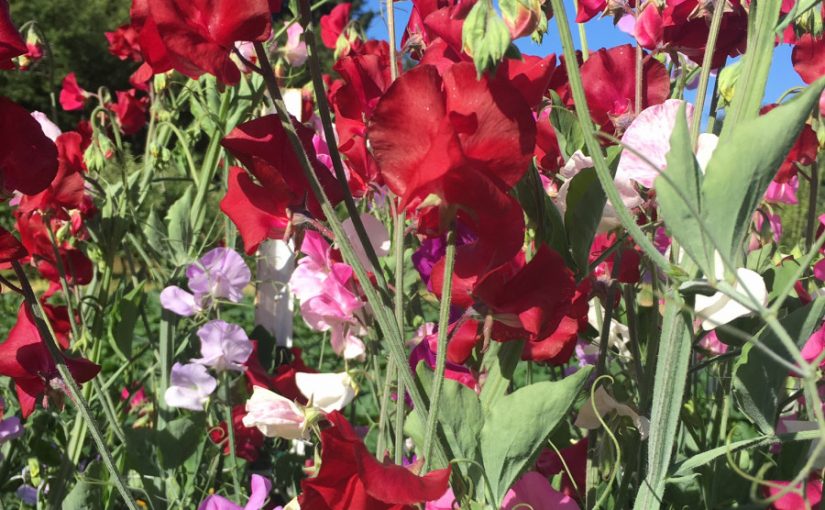Module 4 was all of the tips, tricks, and tools needed to successfully grow the flowers out to harvest. The categories this week were tools (hand, machines, gear), mulch, landscape fabric, supporting your flowers, transplanting, the benefits of pinching, season extension, irrigation, and putting the farm to bed. Clearly a lot to learn with a wide range of topics. For the most part, all of these topics and the tasks shown (i.e. mulching, setting up netting, irrigation, hoop houses, tools used, transplanting, etc.) were very similar or the exact same as the practices used on the Organic Farm at the Evergreen State College.
The one thing that I knew about, but have never had hands-on experience with before was pinching (cutting the tip of the plant to promote branching rather than straight up growth). Pinching is done on “cut and come again” flowers–things like dahlias, zinnias, amaranth, marigolds, cosmos, scented geranium, etc. Anything that is a single-stem flower (i.e. stock, single-stem sunflower) you do not want to pinch. If possible, do it before the plant sets buds. This makes perfect sense to me–similar to why pruning is necessary for fruiting trees. Auxin from the apical meristem will prohibit side branching and give you one tall monster stalk rather than many branches to cut from. Erin pinches before she puts netting on.
At Floret, they use HortiNova branch netting (ensures flowers are supported) just like the Organic Farm. This can be used horizontally, for things like asters or snapdragons, to help the plants grow long, strong, and straight stems and are protected from strong winds. It can also be used vertically, as a trellising system, for things like sweet peas. Floret also uses a post-and-string corralling method for taller, bulkier plants like dahlias or chrysanthemums.
90% of Floret’s annuals are planted into landscape fabric. They pre-burn holes into the fabric with a propane torch with precut templates for their plant spacings. The exceptions to planting into landscape fabric are sweet peas, anemones, and ranunculus who don’t like their feet too hot, opting instead to use paper mulch covered with 2 inches of compost. Dahlias are also not planted in fabric (too difficult to lift tuber clump through the hole when digging them up) but the dahlia pathways are covered with fabric. They also don’t plant any perennials, vines, woodies, or shrubs into fabric as they have major vole populations who will overwinter underneath the fabric. All of these are sheet mulched, using cardboard and mulch over top. A tip I learned about sheet mulching from the videos was to wet down the cardboard before you mulch over top. While it’s probably not so important in the rainy PNW, it’s a great idea for drier climates.
Side note: it’s funny every week what I do at Thistlehook ends up being somehow touched upon within the Floret Online Workshop. This week it was sheet mulching!
I loved learning more about Floret’s greenhouses/hoop houses. Some of them were even It helped me start to think about logistics for farming in Minnesota (the ultimate goal). Round hoop houses will not work for the snowy, icy winters there, which not something I had thought about before. But you could just take down the hoops for the winter and still use them spring-summer-fall for some sea some extension. They do have a gable or gothic-style greenhouse that has a pointy rather than round top, which would be good for a more permanent structure.
RESOURCES:
Floret Online Workshop, Module 4: Get Growing
